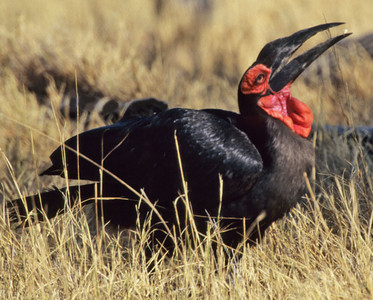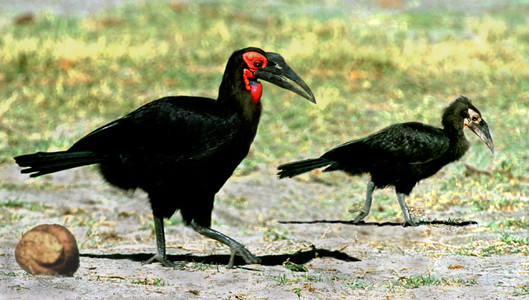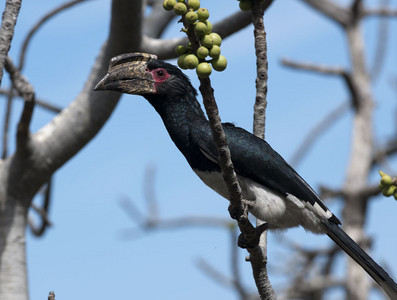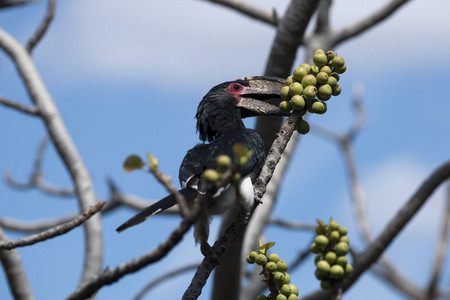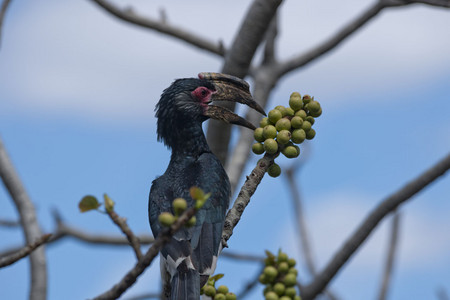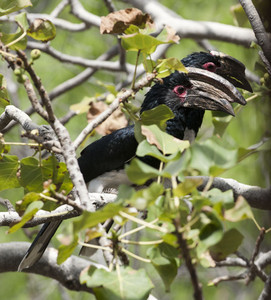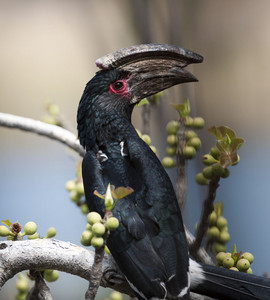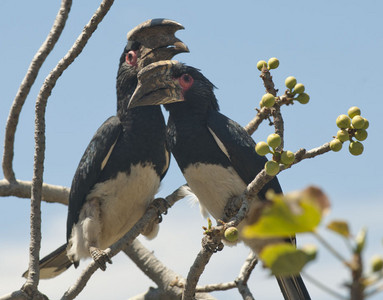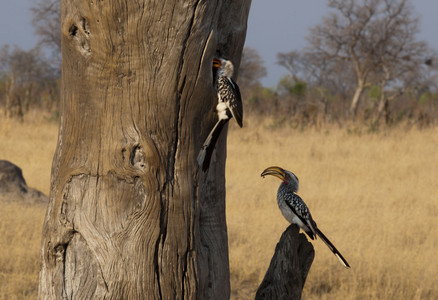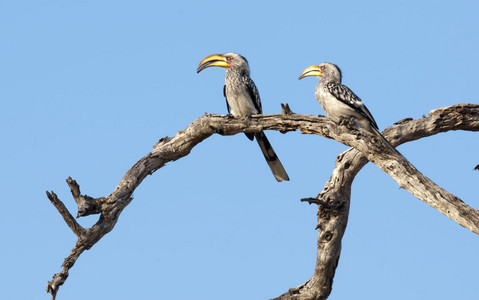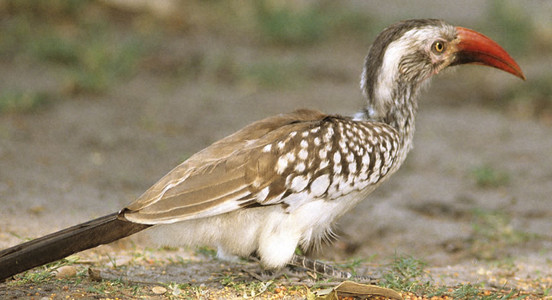
Redbilled Hornbill.
A close-up of a Redbilled Hornbill. These birds are mostly insect & fruit eaters; although, I have fed them a variety of fare and have never been refused. [Moremi NP, Botswana].
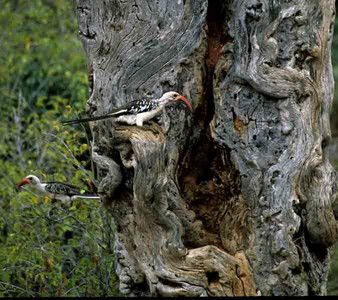
Redbilled Hornbill
A pair of Redbilled Hornbills preparing their nest in a hollow of a dead tree. When the female is ready to lay her eggs, the male seals the entrance nearly shut with mud, leaving only a small hole through which he brings her food. This continues during incubation (24 days). She does not leave the nest until the nestlings are half grown, at which time she reseals the entrance, except for the feeding hole. The total fledgling time is 45 days). [Masai Mara, Kenya]
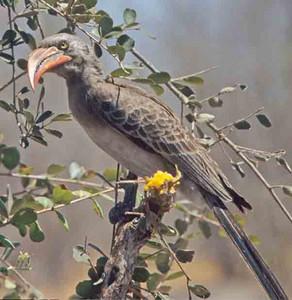
Bradfield's Hornbill
Bradfield's Hornbills are mostly insect & fruit eaters, but I have found that they will eat almost anything. The yellow object is a lump of egg-yolk, which the bird ate with relish. [Khwai, Moremi NP, Botswana].
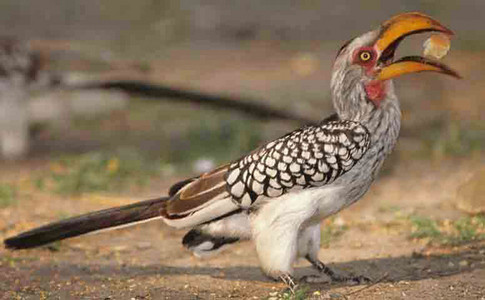
Yellowbilled Hornbill
Yellowbilled Hornbills are the most common hornbill and the most accepting of human company. They are expert at flipping pieces of food (bread) down their gullets, and will accept almost everything that we eat. (Shinde Island, Botswana)
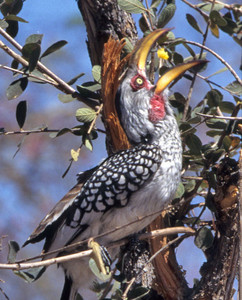
Yellowbilled Hornbill
A different Yellowbilled Hornbill than in the previous image, but also an expert food flipper of the egg-yellow! [Khwai, Moremi NP, Botswana].
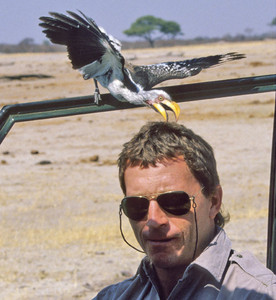
Yellowbilled Hornbill with Dave
A Yellowbilled Hornbill is a frequent visitor at tourist sites where it seeks food offered by tourists or dropped on the ground. It can be quite tame.The bird has just taken a cracker placed on the top of my guide's head. [Hwange NP, Zimbabwe].
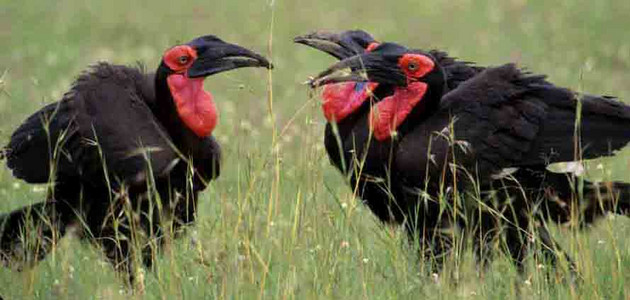
Ground Hornbill
The Ground Hornbill is the largest of the hornbills. Here, two parents are out foraging with their subadult (R, behind). (Hwange NP, Zimbabwe)
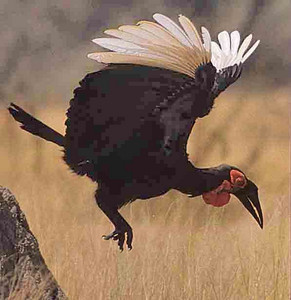
Ground Hornbill
A Ground Hornbill jumping off a termite mound & displaying its white underwing. It is a beautiful sight when a group of them flies overhead. (Shinde Isl.,Botswana)
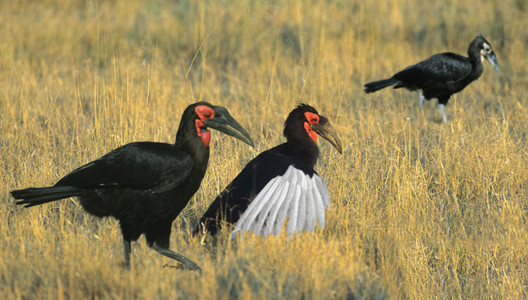
Ground Hornbill
This is a typical Ground Hornbill family. The parents are in the foreground, their chick is in the background. [Masai Mara, Kenya].
